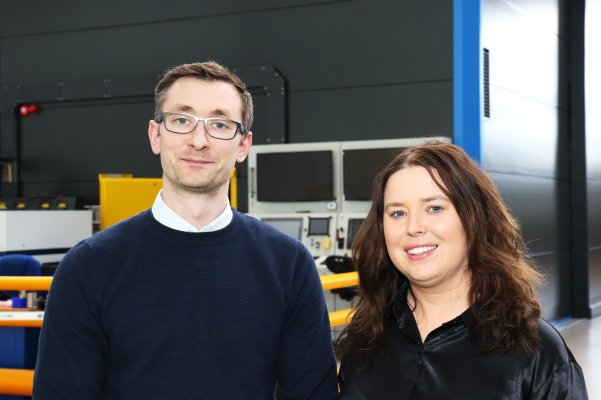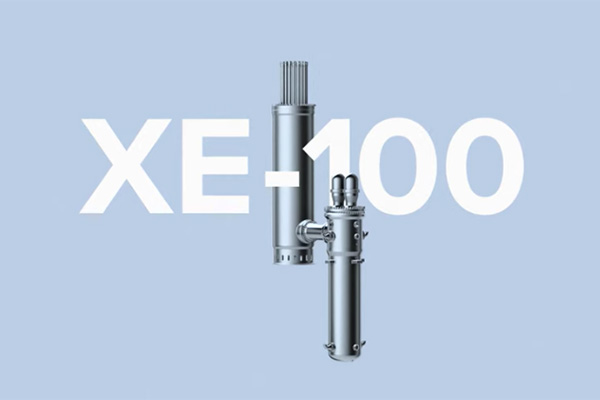Work has begun to prepare the Nuclear AMRC workshop for its newest and largest machining centres. The two machines will be the biggest of their kind available for collaborative research anywhere in the world.
The machines – a purpose-built vertical turning lathe from Dörries Scharmann, and a Soraluce FX12000 floor-type milling and boring centre – will be used to produce large representative-sized parts for the nuclear industry and other high-value sectors.
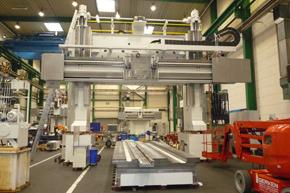 The vertical turning lathe (VTL) will be capable of working on parts of up to five metres diameter and over three metres height. It will offer full milling and deep drilling capabilities, and is designed for the largest high-value components for the nuclear industry, including full-scale reactor internal parts. It is also ideal for machining offshore wind turbine shafts and the largest jet engine fan casings. The VTL is funded by the High Value Manufacturing Catapult, and is currently under construction at the Dörries factory in Germany.
The vertical turning lathe (VTL) will be capable of working on parts of up to five metres diameter and over three metres height. It will offer full milling and deep drilling capabilities, and is designed for the largest high-value components for the nuclear industry, including full-scale reactor internal parts. It is also ideal for machining offshore wind turbine shafts and the largest jet engine fan casings. The VTL is funded by the High Value Manufacturing Catapult, and is currently under construction at the Dörries factory in Germany.
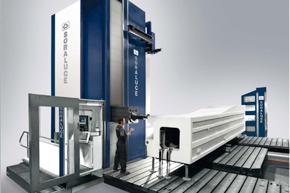 The Soraluce will be capable of working on parts up to 12 metres in length and five metres diameter, and can complete five-sided machining of complex parts in a single set up.
The Soraluce will be capable of working on parts up to 12 metres in length and five metres diameter, and can complete five-sided machining of complex parts in a single set up.
It will be used to develop and demonstrate advanced manufacturing processes for large pressure vessels, high-value reactor internals and offshore wind turbine hubs.
“The Soraluce and Dörries VTL are an absolutely unique capability for any research centre,” says Nuclear AMRC machining head Stuart Dawson. “No other research centre anywhere in the world has the physical size or research capability of these machines, as far as we’re aware.”
Preparatory work to construct the additional foundations required for the new machines began in October. Creating the foundations will take around 20 weeks – while this has the potential to disrupt work in the rest of the Nuclear AMRC workshop, careful planning and specialist contractors mean the workshop will be closed for just three weeks in November. The Soraluce will then take around 12 weeks to install, and the VTL 14 weeks.
“It is a unique heavy engineering challenge,” Dawson notes. “But we will be the only research centre in the world with these capabilities and, from summer 2014, these very large machines will be available to manufacturers for collaborative projects.”
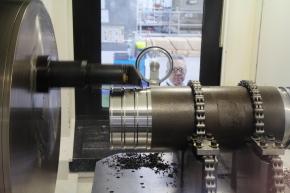 The latest machining centre to be commissioned in the Nuclear AMRC workshop also offers unique capabilities for making complex high-precision components for the energy and oil and gas industries.
The latest machining centre to be commissioned in the Nuclear AMRC workshop also offers unique capabilities for making complex high-precision components for the energy and oil and gas industries.
The Mazak Orbitec 20 features a unique turning and facing headstock, capable of generating turned features while keeping the workpiece stationary. It is ideal for parts which are too large or awkwardly shaped for conventional turning machines, and can carry out high-precision four-sided machining in a single set-up. The Nuclear AMRC’s Orbitec is currently the only one in Europe.


